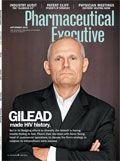To Brand or Not to Brand?
The effectiveness of DTC prescription advertising hinges on a consumer's thirst for information. A new study intimates the less info consumers are given up front, the more they seem willing to learn
Due to the ever-changing marketing and advertising environment, pharmaceutical manufacturers have had to adjust their strategies in order to reach the desired target patient and physician market. They have since begun to shift some of their advertising focus to non-branded, "help-seeking" (according to FDA), or disease-specific consumer advertising—a different focus compared to the traditional, and more prevalent, product-specific advertisements.

Brent Rollins
In its 2004 "Guidance for Industry," FDA defined a non-branded communication as "one which discusses a disease or condition and makes no mention or representation of a particular drug or device." Under this guidance, these communications are exempt from regulation by the agency unless there is only one drug or device used in the disease/condition.

Matthew Perri
A recent example is Pfizer's "My time to quit" campaign. On its website, in addition to medical information regarding smoking cessation, a link is provided to information about an available prescription treatment option. If the user selects the link, they are then taken to a website for Pfizer's branded smoking cessation agent, Chantix.
Overall, spending for this ad type has fluctuated throughout the years, peaking at approximately $590 million in 2005, then gradually decreasing to $165 million in 2008 as overall direct-to-consumer (DTC) expenditures and the economy shrunk. In 2009, however, non-branded expenditures rose to $185 million and, according to a May Pharm Exec blog post, other research shows the popularity of web advertising is only increasing.
Desire for Information
In a December 2009 Pharm Exec article entitled "The New Four P's of Marketing," John Gardner, president and CEO of Integrative Logic, recognized the modern atmosphere and stated, "The key to success in this new marketing landscape is a shift from a pharmaceutical-driven, push-based model toward a pull-based model, where desire for information and education drives action on the part of consumers and medical professionals." He further recognized companies using non-branded websites to facilitate information exchange and consumer education.
The above trends led to the following overarching research question: Which is more effective from a consumer-attitudinal and behavioral-intention perspective—non-branded or branded DTC advertising? In this research, we compared non-branded to the more prevalent branded ads on the basis of attitudes, behavioral intentions and a predefined behavior of clicking "yes" on a hyperlink for more information.
The experiment utilized a randomized, cross-sectional design and Zoomerang's online survey software to create four surveys, each with a different ad for the subject to view. Adult allergy sufferers (18 years old and up), who were shown allergy-focused ads, and females between the ages of 18 and 50, who were shown oral contraceptive (OC) focused ads, were sampled. Each study group (allergy or OC) consisted of two subgroups. The first subgroup was shown a non-branded, help-seeking ad with the second subgroup exposed to the corresponding branded ad. The drug (Allergone for allergies and Anerim for OC) and pharmaceutical company names (DAB Pharmaceuticals and C & C Pharmaceuticals, respectively) were fictitious and created to reduce bias. The branded ad stimuli modeled the form of current print DTC ads, with drug information contained in each ad taken from print ads for Yaz, a prescription OC, and Allegra-D, a prescription antihistamine/decongestant. From these branded ads, non-branded ads were created consistent with FDA guidelines (see chart).

FDA Guidelines for Non-Branded DTC Advertising
The survey measured consumer involvement with the disease state/condition; attitude toward the ad; attitude toward the pharmaceutical company; attitude toward the pharmaceutical industry; behavioral intentions to seek more information, discuss with their physician, and ask for a prescription; and the predefined behavior measure (clicking 'yes' on the hyperlink) to be taken to more information about the medication or disease state/condition.
From a consumer attitude perspective, non-branded ads compared favorably to branded ads regardless of ad type (branded/non-branded), study group (allergy or OC), or demographic information (age, gender, and education). This suggests general consumer attitudes toward DTC advertising have stabilized and is consistent with other research in the area.
Seek and Ye Shall Find
However, in terms of behavioral intentions, non-branded ads produced significantly greater intent to seek more information, discuss the medication/disease state with their physician, and ask for a prescription for the medication/disease state. Examining the total pool of data, behavioral intent did not correlate to consumers clicking to see more information. However, those with higher behavioral intentions performed the information search behavior significantly more than those with lower behavioral intentions. The significantly greater behavioral intentions created by non-branded ads imply this ad type could result in greater physician discussions.
Consumer disease state involvement played a significant role in both attitude formation and behavioral intent. Consumers with a higher level of disease state involvement had significantly more positive attitudes and greater behavioral intent. Interestingly, though, regardless of involvement level, non-branded ads maintained positive attitudes.
From a marketing perspective, this indicates a non-branded ad should be an option to positively engage consumers and induce greater information seeking. Keeping the goal of DTC advertising in mind, the fact consumers may seek more information, have favorable attitudes, and increased discussions with their physician after viewing a non-branded ad is vital information for the pharmaceutical marketer. By not advertising a specific product, non-branded ads may also be seen by the consumer as more objective and credible. Then, not only would the industry benefit from greater discussions with physicians, they would have the added image benefit of promoting disease education and removing the controversial risk versus benefit "fair balance" issue associated with branded advertising.
From the FDA's perspective, non-branded ads increase the amount of consumer disease education in the marketplace and, again, possibly remove the risk-benefit fair balance issue. This past March, the FDA proposed an amendment to its DTC regulations, stating "the major statement in DTC television or radio advertisements relating to the side effects and contraindications of an advertised prescription drug intended for use by humans be presented in a clear, conspicuous, and neutral manner" (Federal Register, March 2010). Further, the FDA has had to frequently address this subject through regulatory or punitive measures (USA Today, May 30, 2005).
Benefits of Non-Branding
The use of non-branded ads would allow the FDA to reduce their resources focused on this continually problematic issue. Further, if non-branded ads were used exclusively in the early stages of product marketing, they could provide marketing and disease education opportunities while initial post-marketing surveillance is conducted. This could also possibly avoid a situation in which a drug is heavily utilized early in its life cycle, speeding up the introduction and growth phases and reaching maturity rapidly, which would decrease the time manufacturers, and the FDA, have to monitor the product's post-marketing impact.
In the June 2008 issue of DTC Perspectives, Kristin Patton, then President of HealthED Group, advocated this when asked how marketers should combine patient education with broader DTC efforts to get the best effect. She said "let the mass campaign solely drive awareness and direct prospective patients to an appropriate resource." Though future research is needed to validate these results in various disease states and marketing exposures, in a highly regulated marketing environment where information and education is power, non-branded, disease education ads might be the pharmaceutical marketers' future focus.
Brent Rollins is Assistant Professor of Pharmacy Administration at Philadelphia College of Osteopathic Medicine, Georgia Campus. He can be reached at brentro@pcom.edu
Matthew Perri is Professor of Clinical & Administrative Pharmacy at the University of Georgia. He can be reached at mperri@rx.uga.edu

Navigating Distrust: Pharma in the Age of Social Media
February 18th 2025Ian Baer, Founder and CEO of Sooth, discusses how the growing distrust in social media will impact industry marketing strategies and the relationships between pharmaceutical companies and the patients they aim to serve. He also explains dark social, how to combat misinformation, closing the trust gap, and more.
FDA Grants Priority Review to Regeneron’s Eylea for Macular Edema Following Retinal Vein Occlusion
April 18th 2025Regulatory action was based on data from the Phase III QUASAR trial, which demonstrated that Eylea HD dosed every eight weeks achieved non-inferior visual acuity outcomes compared to Eylea in patients with macular edema following retinal vein occlusion.